Manje Garden (만재가든)
4.4 Km 93 2021-03-26
356, Jungang 1-ro, Haenam-gun, Jeollanam-do
+82-61-533-6222
It is a store specializing in Korean beef. This Korean dishes restaurant is located in Haenam-gun, Jeollanam-do. The representative menu is grilled tenderloin.
Jeonju Sikdang (전주식당)
5.0 Km 24728 2021-10-16
170, Daeheungsa-gil, Haenam-gun, Jeollanam-do
+82-61-532-7696
Jeonju Sikdang is a noted restaurant for Haenam folk cuisine. It was designated by the Korean Traditional Culture Preservation Society after
getting many awards, such as Special Culinary Award.
The main items on the menu are pyogo jeongol (shitake mushroom hot pot) and sanchae jeongsik (set menu with seasoned wild vegetables). In particular, the restaurant's signature pyogo jeongol uses ingredients that are all prepared in house using organic shitake mushrooms, beef, Manila clams, along with other seafood and vegetables, giving it a clean and rich taste. The theme of the restaurant, “Enjoying natural dishes in the mountains,” fits perfectly with the taste of their mushrooms, which carries a excellent taste without the addition of any artificial seasoning. The restaurant also sells dongdongju (traditional Korean liquor), a drink that brings deeper flavors of the food.
Téléphérique du mont Duryusan (두륜산케이블카)
5.0 Km 38328 2023-03-24
88-45, Daeheungsa-gil, Samsan-myeon, Haenam-gun, Jeollanam-do
+82-61-534-8992
Le mont Duryunsan (703mètres) est un des monts les plus fameux de la province Jeollanam-do. Composé de 8 sommets, le lieu abrite de nombreux temples ainsi que des sites historiques. Le mont est aussi réputé pour préserver une grande richesse en matière de faune et de flore. Le plus haut sommet peut être atteint après 2 à 3 heures de marche depuis le temple Daeheungsa. Vous pouvez aussi emprunter le téléphérique Daeryunsan (environ 8 minutes de trajet). Depuis le sommet, vous pourrez apprécier Dadohae (une mer composée d’îles), ainsi que la montagne Hallasan sur l’île de Jeju les jours de beau temps. Vous pourrez aussi profiter des nombreuses attractions touristiques aux alentours avec notamment le musée des dinosaures Uhangri, le village touristique Usuyeong et le village Ttangkkeut.
Cheongsu Minmul Jangeo - Haenam Branch (청수민물장어 해남)
5.4 Km 120 2021-03-26
542, Haenam-ro, Haenam-gun, Jeollanam-do
+82-61-534-8484
A restaurant that serves live eel cooked on the spot. This restaurant's signature menu is grilled eel. This Korean dishes restaurant is located in Haenam-gun, Jeollanam-do.
Parc Provincial du Mt. Duryunsan (두륜산도립공원)
7.1 Km 25276 2021-05-24
400, Daeheungsa-gil, Haenam-gun, Jeollanam-do
+82-61-530-5543
Contenant de nombreux temples bouddhistes et les ruines, ainsi que des paysages spectaculaires, le MT 703 de haut. Duryunsan est situé au point le plus méridional de la péninsule coréenne. Formé par subtropicales et tempérées feuillus vert des arbres feuillus, la montagne est une très grande valeur pour l'observation de chorologie usine. En outre, la mer Egée à la mer de l'Ouest et du Sud peut être vu un coup d'œil au sommet de huit montagnes, bien que les vastes champs de roseaux couvrent de nombreux domaines.
Au cours de la cinquième année du règne du roi Jinheung's (514), prêtre bouddhiste, Ado, construit Daedunsa Temple, qui est un lieu de grande valeur historique car elle est également liée au prêtre bouddhiste, Seosan. Le temple est fièrement parmi les forêts denses, composée d'érables et de camélias. À couper le souffle paysages des vallées et des arbres touffus on peut le voir sur les deux côtés de la route 2 kilomètres menant au temple.
Temple Daeheungsa [Patrimoine mondial de l'UNESCO] (대흥사)
7.1 Km 9191 2020-12-22
400, Daeheungsa-gil, Samsan-myeon, Haenam-gun, Jeollanam-do
+82-61-534-5502
Le temple Daedunsa est situé dans le Parc Provincial Duryunsan et fut originellement construit par un moine de Shilla, Adohwasang, dans la quatorzième année du règne du Roi Muryeong pendant la Dynastie Baekjae et il a continuellement été remodelé par la suite. Le prêtre bouddhiste Seonsa, souhaitait que le temple soit un lieu sacré et paisible et a symboliquement demandé à ses disciples, Samyeongdang Yujeong et Nyemukdang Choeyeong, de laisser son costume bouddhique ainsi que son bol de riz au sein du temple. Le temple prospéra plus tard et produisit des prêtres bouddhistes, 13 Daejongsa et 13 Daegangsa. Le nom de Daedunsa a été rétabli en 1993 after qu’il fut nommé Daeheungsa durant l’occupation japonaise.
Seoladawon [Korea Quality] / 설아다원 [한국관광 품질인증]
9.1 Km 10534 2023-04-13
153-21, Samseong-gil, Bugil-myeon, Haenam-gun, Jeollanam-do
+82-61-533-3083, +82-10-7616-6129
Located at the foot of Mt. Duryunsan in Haenam, Jeollanam-do Province, Seola Dawon is committed to preserving and inheriting the tea culture and nature of the region. The owner began to cultivate this place after hearing the concerns about the absence of a person who would inherit the tea culture of this region from a Buddhist monk he met at Iljiam Hermitage of Daeheungsa Temple in Haenam in 1996. Meanwhile, nine young men who studied tea together cultivated the green tea field in Haenam and built houses. After that, people who had affection for teas began to visit Seola Dawon. Since there were no decent accommodations for people who came from afar, they built eight Korean traditional-style houses in all including a Sarangbang made with stones, the earthen house, the wall-frame house, and the earthen bag house. The Korean traditional-style house was built in 2003 as a cultural space and later remodeled into rooms for the operation of Hanok Stay.
Haemaru healingsoup [Korea Quality] / 해마루 힐링숲 [한국관광 품질인증]
11.7 Km 5747 2020-12-12
108-35, Donghae-gil Bukpyeong-myeon, Haenam-gun, Jeollanam-do
+82-10-2332-6303
'Haemaru Healing Forest is a guesthouse situated at the foot of Duryunsan Mountain, Haenam in front of Wondo Beach and surrounded by a cypress grove. The mountain, cypress grove, and beach are all visible from the main floored hall room. For this reason, many of the guests who stayed here say that the picturesque view seems to change day by day. The town where the guesthouse is located is specially designed as a 'hanok village,' consisting mostly of traditional Korean houses of Jeollanam-do. It is also widely known as 'Haenam Kimchi Village' because of their famous cabbages, which are grown in the natural environment and are used to make kimchi. Specifically, there are three villages in this area: 'Green Experience Village,' 'Farm Stay Village,' and 'Resort Village.' There is a public swimming pool in the area managed by the villagers and is very popular among visitors, with ticket sales reaching KRW 100,000,000 a year. One of the advantages of staying at this guesthouse is that it’s within a one-hour ride to a number of popular nature destinations such as Wando Cheongsando Island, Gangjin Dasan Chodang, Jangheung Cheongwansan Mountain, Woodland, and Yeongam Wolchunsan Mountain. Haenam is known as one of the best regions of Korea for enjoying the famous Jeolla-do cuisine, so visitors to Haenam are advised to try the local food. The villagers built these traditional Korean guesthouses so that their visitors can have a day of relaxation in nature, away from their hectic city life. With this mind, they used natural pinewood and red clay from Gangwon-do to build authentic traditional Korean houses and utilized traditional Korean tiles from Goryeong. The name 'Haemaru Healing Forest' was given by the owner of the guesthouse, with the subtitle 'A place where you can tell your story.' The guesthouse buildings are in 'ㄱ' shape. The main building, called 'anchae' in Korean, has floor area of 72m², which is big enough for up to 25 people. There are two rooms, a large living room, and a kitchen in this building. The rooms are furnished with sofa, television, air conditioner, refrigerator, and table just like an ordinary home so that guests can feel at home during their stay. The 'bakkatchae,' or 'detached house,' is a single room with capacity of 6 and is furnished with air conditioner and bathroom. The guesthouse is owned by a couple who still work in Seoul and need to travel back and forth between Seoul and Haenam frequently. They're both nature lovers, so their most favorite place in the house is the kitchen garden where they cultivate their own organic lettuce, perilla leaves, and chili peppers. The kitchen garden is open to guests who want to try the homegrown organic vegetables. Various experience programs are offered here as well, such as yunnori, dadeumi, jwibulnori, and kimchi making. Jwibulnori is a traditional Korean game played on the eve of Daeboreum or First Full Moon Day, where people burn dry grass on the ridges of rice paddies and fields and others spin cans of flames attached to the end of a stick or a sling. For safety reasons, this game is played with the consent and participation of the villagers, so be sure to ask the owner of the guesthouse when the game is played. It’s free for groups of more than 10 people. As for the kimchi-making class, it is offered by the guesthouse owner's younger brother and sister-in-law who live and run a kimchi factory in the village. They will teach you how to make kimchi, step-by-step, start to end. The kimchi-making class is a paid program, so be sure to ask the guesthouse owner how much and when the class is held.
Dasan Chodang (Site historique de Dasan Jeong Yak-yong) (다산초당 - 다산 정약용 유적지)
12.6 Km 19498 2023-07-11
Gyul-dong, Mandeok-ri, Doam-myeon, Gangjin-gun, Jeollanam-do
+82-61-430-3363
Dasan Chodang fut le lieu d'exil de Jeong Yak-yong (aussi connu sous le nom de Dasan), lettré de la fin de la Dynastie Joseon, et là où il étudia le Silhak.
Jeong Yak-yong fut envoyé en exil pendant 18 ans à Gangjin pour avoir écrit une lettre d'appel secrète plus tard nommée "Hwang Sa-yeong Baekseo". La plupart de ses ouvrages furent rédigés à Dasan Chodang. Il passa ses derniers jours dans sa ville de naissance, Namyangju.
Si vous marchez le long du chemin près de Dasan Chodang, vous pouvez voir le Pavillon Cheonilgak. Il offre de splendides vues sur la baie de Gangjin. Egalement à proximité se trouve le Musée Dasan où vous pouvez découvrir comment ce philosophe vécut.
Da hyang so ckuk [Korea Quality] / 다향소축 [한국관광 품질인증]
12.8 Km 11358 2023-04-13
7-5, Dasanchodang 1-gil Doam-myeon, Gangjin-gun, Jeollanam-do
+82-10-3616-0360
'Dahyang Sochuk is a traditional Korean guesthouse with 70 years history located near the entrance to Dasan Chodang (Dasan Jeong Yakyong Historical Site) in Gangjin-gun, Jeollanam-do. The guesthouse is like a folk museum where guests get to see the items that Korean ancestors actually used. One of the advantages of staying at Dahyang Sochuk is that you can have all the green tea you want because there are wild green tea plants growing around the building. The areas around the guesthouses are decorated with unique bonsai trees and flowers all seasons for the guests to enjoy. All the rooms are coated with red clay and furnished with naturally dyed linens, both of which are healthy for the body while very smooth to the touch and aromatic. Right before winter, an array of potted chrysanthemums is placed along the entranceway, making you forget the cold weather for a moment. All in all, it’s a great place to stay and relax amid nature.
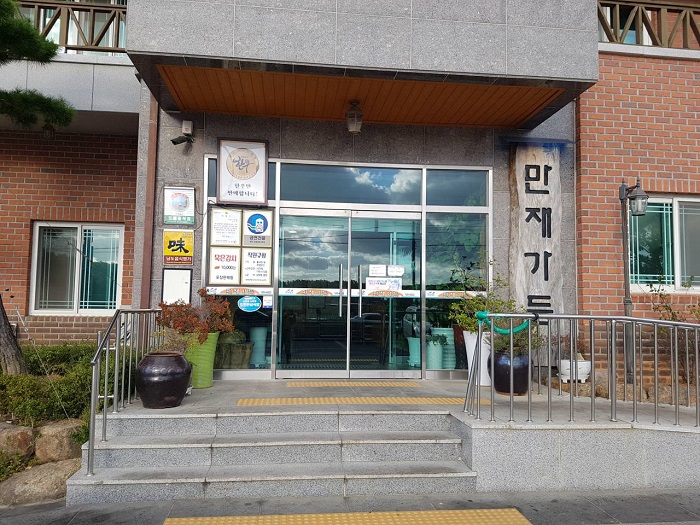
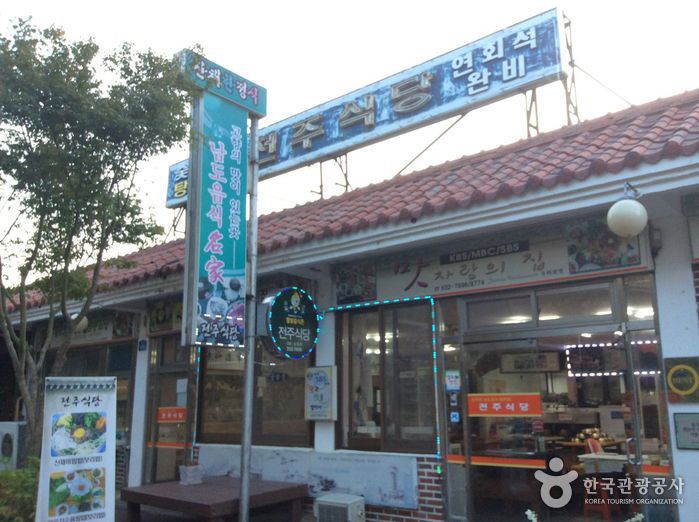
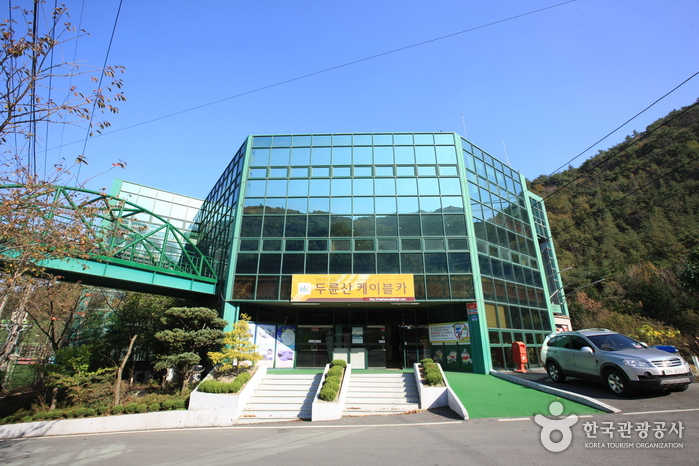
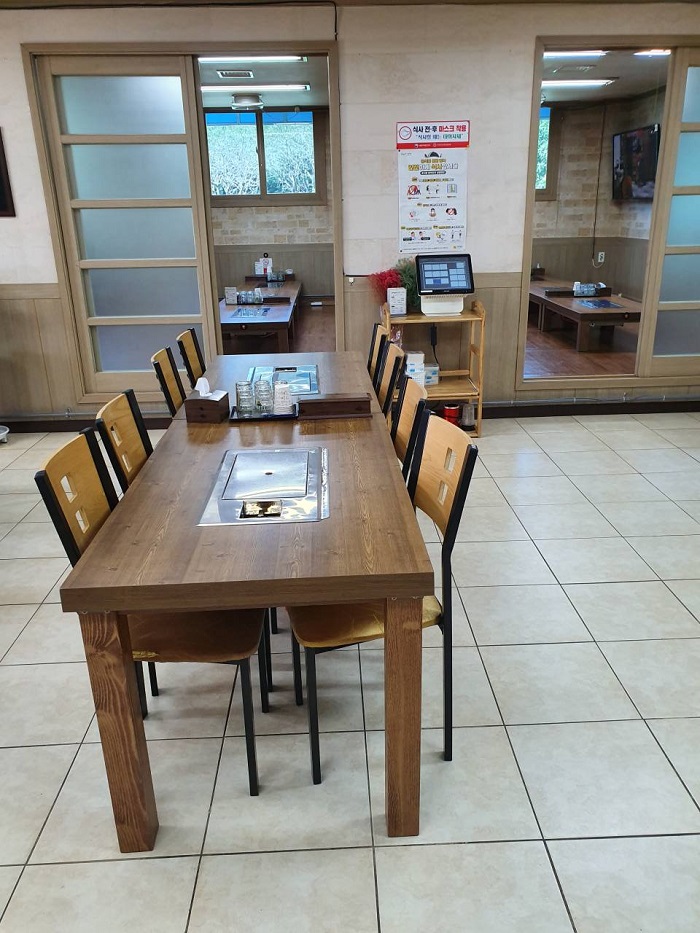
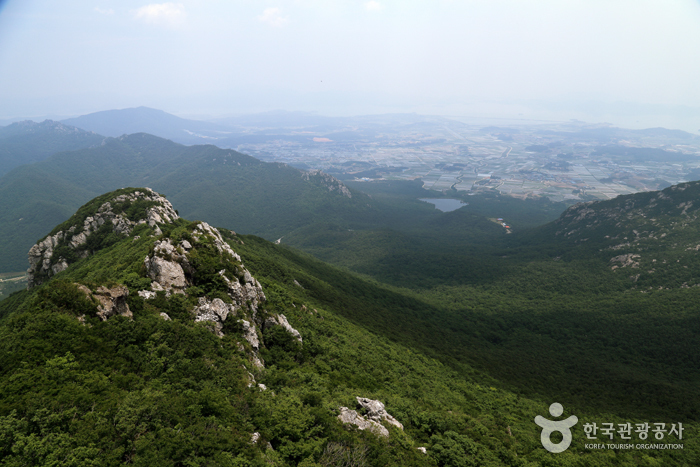
![Temple Daeheungsa [Patrimoine mondial de l'UNESCO] (대흥사)](http://tong.visitkorea.or.kr/cms/resource/09/1929609_image2_1.jpg)
![Seoladawon [Korea Quality] / 설아다원 [한국관광 품질인증]](http://tong.visitkorea.or.kr/cms/resource/63/2584863_image2_1.jpg)
![Haemaru healingsoup [Korea Quality] / 해마루 힐링숲 [한국관광 품질인증]](http://tong.visitkorea.or.kr/cms/resource/35/2049835_image2_1.jpg)
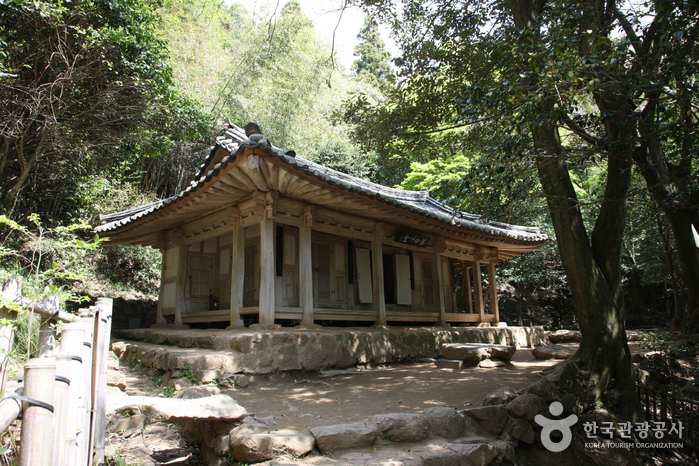
![Da hyang so ckuk [Korea Quality] / 다향소축 [한국관광 품질인증]](http://tong.visitkorea.or.kr/cms/resource/44/2575744_image2_1.jpg)
 Français
Français
 한국어
한국어 English
English 日本語
日本語 中文(简体)
中文(简体) Deutsch
Deutsch Español
Español Русский
Русский